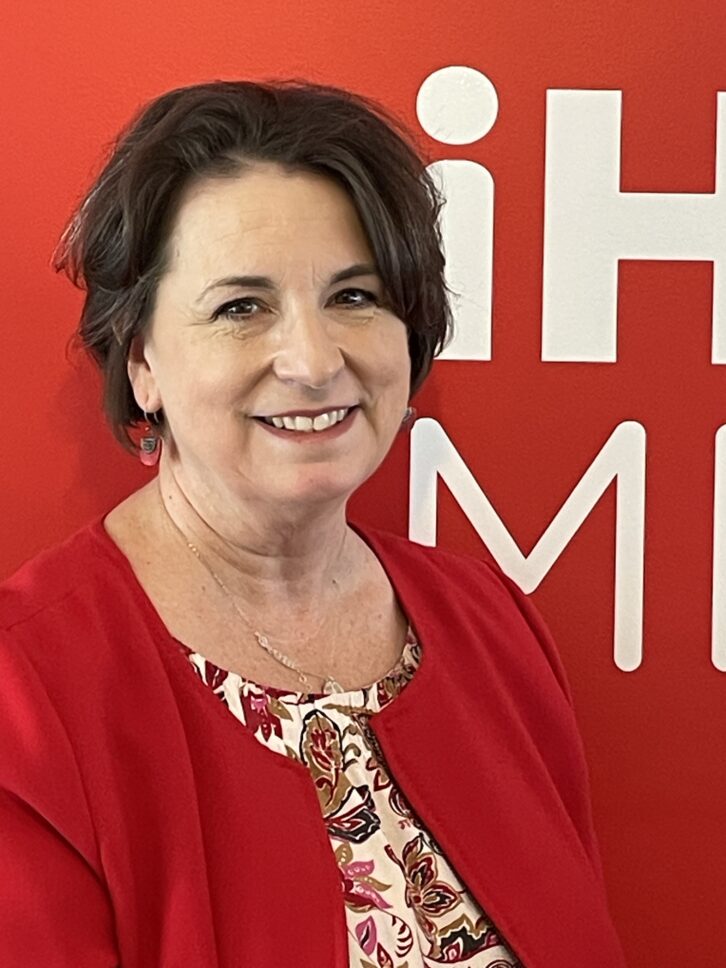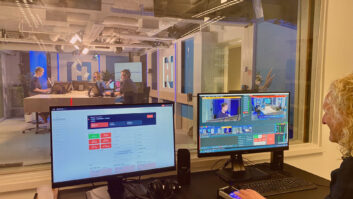As the NAB Show opens, what are the most important business issues facing U.S. radio owners and executives? We asked six experts.
“Continuing to keep our over-the-air broadcast relevant for both advertisers and audiences by incorporating new technology platforms to our value offering and compete with other digital content media outlets,” replied Felipe Chávez, COO of Bustos Media.

For consultant Mike McVay, “The challenge ahead is shifting radio, as a part of legacy media, into being an integral part of multitier media campaigns. Impressions is important and it’s nearly impossible for an audio medium like radio to accurately validate reach. The results must come from selling services, merchandise, products and influence.”
Rhonda Lapham, market president of iHeartMedia for Cape Cod and Providence, said, “There are lobbying groups focused on issues like taking free over-the-air broadcast radio out of cars. This would make it harder for us to serve our communities, which is our mission, as well as harder for FEMA to reach people with critical lifesaving information.
“Broadcast radio is the only medium licensed by the federal government to serve America communities; it’s our most important priority. Anything that would make that harder, or make it harder for our communities to easily access free, over-the-air broadcast radio, is a concern for me,” Lapham said.

Chad Lopez, president of 77WABC and Red Apple Media in New York, wants to correct a narrative that radio is dead. “This has had a trickle-down effect from advertisers, to agencies, all the way down to how investors see us,” he said.
“The days of high multiples are gone. Correcting the narrative is essential for radio groups and owners. The audio medium may be challenged by the ever-growing number of other media distribution choices and what’s going on with AM radio in electric cars. However, when you have station owners and groups that invest in the product, you see positive results in ratings and revenue follows.
“From small businesses to large, when ownership invests in their product, so will Wall Street.”
Technologies
Rick Ducey, managing director of BIA Advisory Services, says several technologies are worth watching for their possible impact.
“First, the FCC’s recent move to approve over-the-air geotargeting of content, including ads, for several minutes per hour will provide the option for local radio stations to get into the geotargeting business,” he said.
“While the NAB and some broadcast groups see downsides, we believe the option to offer broadcast geotargeting is a positive, and this is supported by brand and agency studies, engineering studies and BIA’s own revenue forecasts.”

He also pointed to the critical role of the in-car environment. “Making more innovative uses of in-dash display technology for both synchronized (to the audio) and non-synchronized (i.e., not related to the audio) ads, displaying other data such as sports, weather, traffic, local interest data in text scrolls and graphics, using QR codes and other innovation applications for HD Radio and RDS analog receivers will add strong value for audiences,” Ducey continued.
“And third, the work Xperi is doing with DTS AutoStage to bridge the linear broadcast and connected car experience is a path to future business models for local radio groups as auto OEMs increase their adoption of this tech.”
Ducey thinks generative AI is only beginning to deliver on its expectations. “That said, it is a high-value impact for sure. GenAI will be extremely valuable for content creation and editing including news, sports and commercial content. Of course, GenAI is a tool that must be designed and managed well to provide the best outcomes and minimize unintended negative consequences.”
Mike McVay agrees that “We’ve only begun to scratch the surface of AI’s abilities — improving commercial content, upgrading radio websites, providing talent with more content, and enabling promotion departments to be more efficient in reaching potential listeners. AI is a tool, but it’s not the medium itself.”
Said Rhonda Lapham of iHeart, “AI is an important new platform that has and will continue to add great value to our industry in many ways, both for our products and how we operate. This new technology will help us improve and streamline day-to-day activities, from prospecting for new clients to researching and preparing for pitches, scanning and summarizing documents. We’ll be rolling out our own iHeart-specific AI solutions to help our internal teams use AI effectively.”

of Red Apple Media takes a cautious view about using generative AI on the air, especially for formats that require active listening such as news, talk and sports.
“The product on all formats, however, suffers. A computer is not going to generate the human element of interaction and intimacy, which is exactly what makes radio a terrific medium for not only reaching but influencing audiences. This is what we need to push, over and over again, in our dialogue with advertisers, agencies and investors.
“In terms of running a station, automation can run a board, but you don’t get rid of the people. You move them into content creation. You need the human element to know if what’s being said is of interest to the audience. We need to learn how to use automation to our advantage and enhance the product by freeing those employees to focus on creating additional content that our listeners are yearning for.”
Lopez said streaming and digital assets can give advertisers more avenues to reach listeners and combat the image of radio as an “old” medium.
Felipe Chávez of Bustos Media says AI has proven useful in some areas such as copywriting and translation, though he would like to see more applications that specialize in Spanish-language radio. Looking beyond AI, he said, “Digital FM asymmetric power operation is another interesting topic to increase the reach of the station’s HD channels to new audiences. We are also watching with great interest the FM booster geotargeting capabilities.”
What next?
Over the next several years, what will be the most important change in this business?

“The most successful radio companies will continue to evolve into marketing companies,” McVay replied. “In this way it is a regression to when we sold products and services. The purpose of attracting the largest audience is to expose those products and services in order to increase revenue for our advertising clientele.”
Rick Ducey’s colleague Nicole Ovadia, vice president of forecasting and analysis at BIA Advisory Services, said programmatic advertising — “featuring self-serve on-boarding to tap into the long-tail SMB market, where there are millions of potential accounts” — is critical for both OTA and digital ad inventory.
Also, she said, “Managing and where possible reducing debt leverage and creating more favorable capital structures is critical. And first and foremost, create products and services that audiences and advertisers want.”
Chad Lopez hopes the industry will embrace the intimacy that other media cannot replicate.
“There are many ways to get in front of your audience digitally; however there is still an appetite for that connection that only radio provides. Radio needs to get back to grassroots strategies. Whether it comes down to events or doing live remotes, we need to create experiences on radio, inside the station and out.”

He wants radio to get smarter about building connections with younger consumers.
“Many subscribe to the notion that people under 30 don’t want to work in radio, let alone AM radio. We are building a younger audience, and that should be an important topic for everyone in radio. Part of building a younger audience is building a younger staff that is invested in the medium.”
Said Rhonda Lapham, “I feel that radio will continue to evolve and discover new ways to be where consumers are. Delivering information and entertainment when and where consumers want it and how they want it.
“Not knowing what the future has in store in terms of technology, I do know that our industry can pivot and evolve right along with it, it always has,” she concluded. “Look at the role digital has played for us. Digital has substantially added further radio listening, it’s additive listening for us. We are agnostic as to which device listeners want to receive our content on.”










